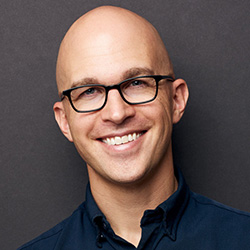Master the Art of Business
A world-class business education in a single volume. Learn the universal principles behind every successful business, then use these ideas to make more money, get more done, and have more fun in your life and work.
What Is 'The Critical Few'? (Pareto's Law, 80/20 Rule)
The Critical Few, also known as Pareto's Law or the "80/20" rule, which explains that in many areas of life 20% of the input produces 80% of the output, and vice versa.
You can achieve great results by focusing on the critical inputs that produce most of the outputs that you want.
The same can be applied for the results that you don't want. Sometimes eliminating certain sources of input is the smart choice, because they are significant Opportunity Costs.
Find the inputs that produce the desired outputs and focus on them. Weed out the rest.
Josh Kaufman Explains 'The Critical Few'
Vilfredo Pareto was an 19th-century economist and sociologist who was very interested in the topic of land ownership and the social distribution of wealth.
After collecting and analyzing a great deal of data, Pareto found a pattern: over 80% of the land in Italy was owned by less than 20% of the population.
The Italian economy wasn't distributed evenly, or in the bell-curve shaped distribution many people assumed-wealth was highly concentrated among a relatively small group of individuals.
As Pareto studied other areas of life, he consistently found the same pattern: in Pareto's garden, for example, 20% of the pea pods produced 80% of the peas.
In any complex system, a minority of the inputs produce the majority of the output.
This pattern of persistent non-linearity is now called Pareto's Law, or the 80/20 Principle. Personally, I prefer to refer to it as The Critical Few.
Once you understand this common pattern, you'll discover it find it in many areas of life:
- In many businesses, less than 20% of the customers account for more than 80% of annual revenue.
- Less than 20% of a business's employees typically do 80% or more of the highly valuable work.
- You wear less than 20% of the clothing in your closet over 80% of the time.
- You spend over 80% of your time communicating with less than 20% of your personal contacts.
The non-linearity of the Critical Few can often be extreme. For example, less than 3% of the world's population is in possession of over 97% of the world's total wealth.
Over time, political power (in both countries and companies) also tends to concentrate into the hands of a few people, which results in a very small group of individuals making decisions that directly affect the lives of hundreds of millions of people.
Far less than 1% of movies ever produced become blockbusters, and less than 0.1% of books ever written become bestsellers.
For best results, focus on the critical inputs that produce most of the results you want.
In The Four-Hour Workweek, Timothy Ferriss used the Critical Few to identify his best performing customers. Out of the 120 of customers Ferriss was serving, 5 of them accounted for 95% of the revenue. By focusing on those top-performing wholesalers and putting the rest on "autopilot," Ferriss doubled his monthly revenue and cut his work time from 80 hours to 15 hours a week.
The same approach is often useful to weed out results you don't want. While conducting his business analysis, Ferris realized that two particular customers accounted for most of his frustration and fire-fighting. "Firing" these energy-sucking customers, even though they represented significant sources of volume, liberated his time and energy. As a result, he was able to secure distribution with three additional high-volume customers that boosted the bottom line without the constant headaches.
Non-critical inputs are significant Opportunity Costs. If you're wasting most of your time in unproductive meetings, for example, you're wasting time that could be used to actually get important things done.
The same goes for non-critical expenses: they represent money that you could be using to far greater effect. Find the inputs that produce the outputs you want, then make them the focus of most of your time and energy.
Ruthlessly weed out the rest.
Questions About 'The Critical Few'
- What 20% of inputs are causing 80% of your desired results, and how can you spend more time and energy doing those things?
- What 20% of inputs are causing most of your frustrations and problem, and how can you eliminate them quickly?
"Typically, causes, inputs, or effort divide into two categories: (1) the majority, that have little impact, and (2) a small minority, that have a major, dominant impact."
Richard Koch, author of The 80/20 Principle
Understanding Systems
https://personalmba.com/critical-few/
Master the Art of Business
A world-class business education in a single volume. Learn the universal principles behind every successful business, then use these ideas to make more money, get more done, and have more fun in your life and work.

